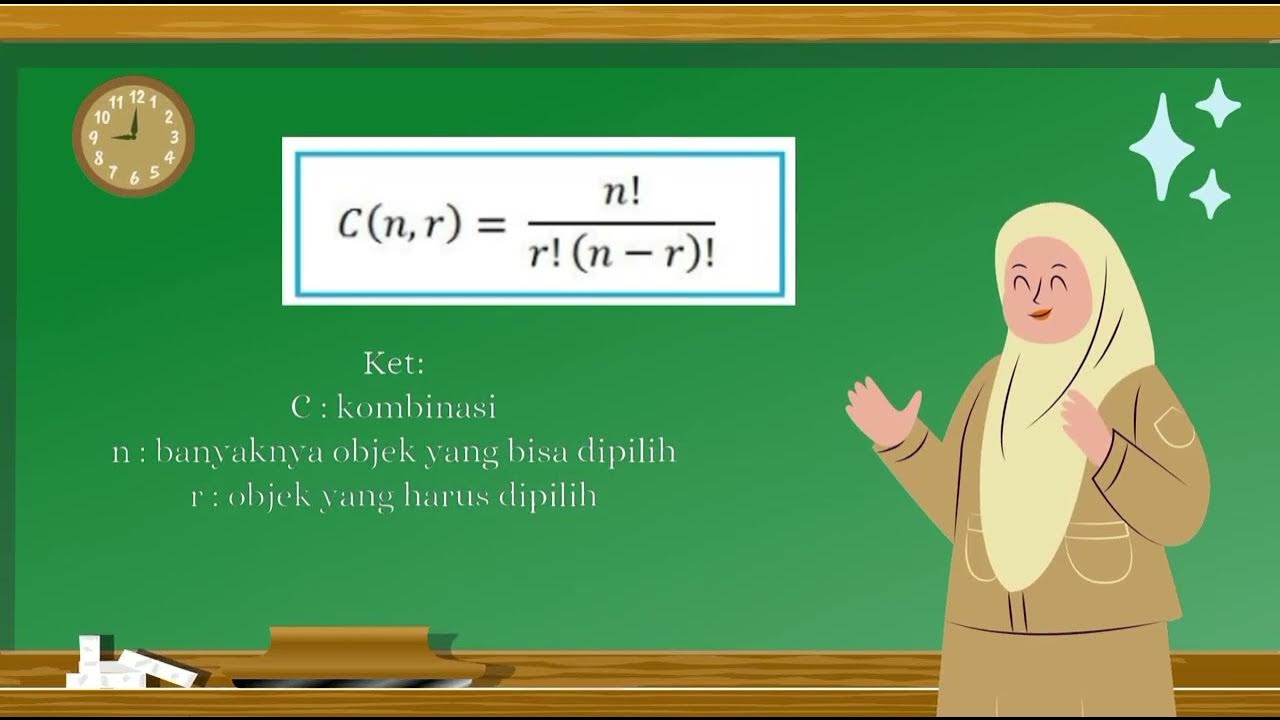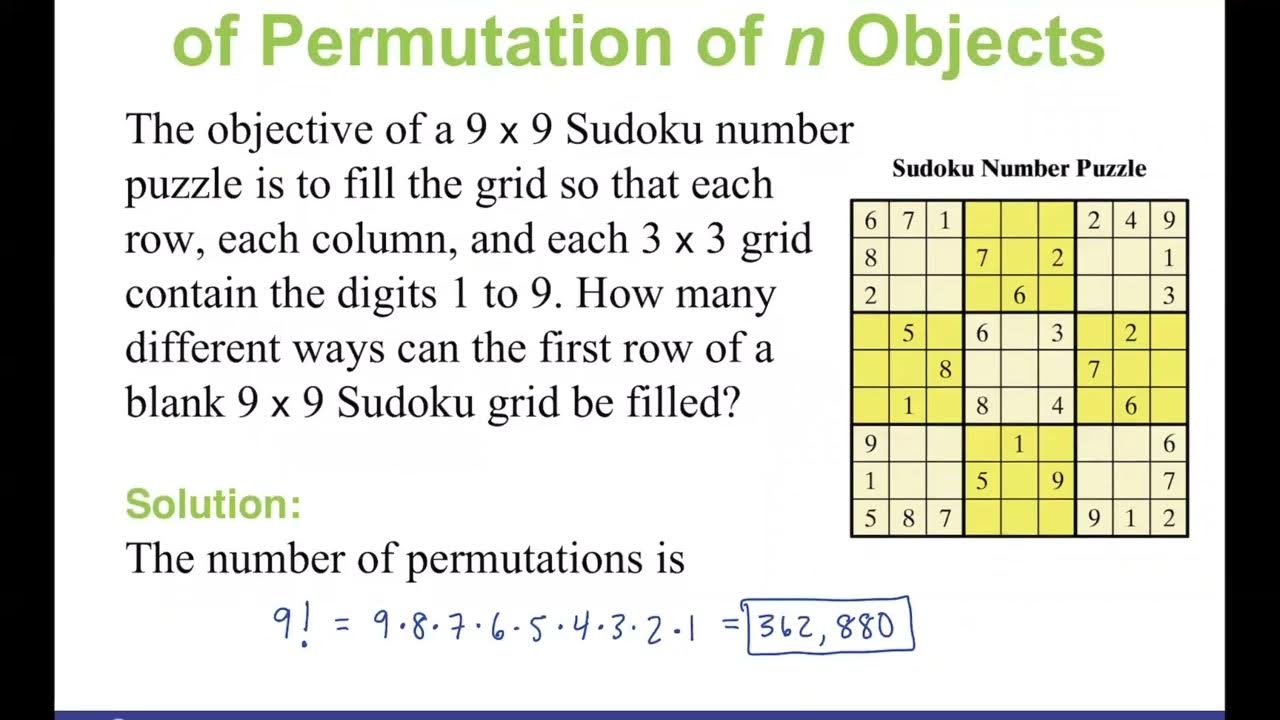Combinations
Summary
TLDRThis script introduces the concept of combinations, contrasting them with permutations. It emphasizes that combinations, unlike permutations, do not consider the order of selection, which is crucial for understanding their application in scenarios like forming a survey group. The script defines combinations and illustrates them with examples. It also differentiates permutations, which are ordered arrangements, from combinations. The combination rule is introduced, showing how to calculate the number of combinations (nCk) using factorials. Practical examples, like selecting survey participants or art pieces, are used to demonstrate the formula's application.
Takeaways
- 📝 The concept of combinations is introduced as a way to select items where order does not matter, contrasting with permutations where order is significant.
- 📝 Combinations are defined as a collection of distinct objects where the order of selection is irrelevant, exemplified by sets like {T,H,R} and {1,2}.
- 📝 Permutations are ordered arrangements of distinct objects, with the key difference being that the order of elements matters, unlike combinations.
- 📝 The number of permutations of length k is k factorial times larger than the number of combinations of length k, highlighting the difference in scale between the two.
- 📝 The formula for calculating the number of combinations, denoted as nCk, is derived from the relationship between permutations and combinations.
- 📝 The combination rule formula is presented as a way to compute the number of combinations of size k out of n items.
- 📝 Practical applications of the combination formula are demonstrated through examples, such as selecting combinations of letters and people for surveys.
- 📝 The 'n choose k' notation is explained as a common way to represent combinations in literature and everyday language.
- 📝 The script provides examples of real-world scenarios where the concept of combinations is applied, such as selecting committee members or pieces of art for donation.
- 📝 The importance of combinations and permutations as foundational concepts in combinatorics is emphasized, highlighting their relevance in various applications.
Q & A
What is the primary difference between selecting a basketball team and selecting participants for a survey?
-The primary difference is that the order of selection matters for a basketball team but does not matter for a survey.
What is the definition of a combination?
-A combination is a selection of items from a larger set, such that the order of the items does not matter.
Can you provide an example of a combination?
-Yes, {T,H,R} is a combination of length three from the set {T, H, R}, and {H,R,T} is also considered the same combination because the order doesn't matter.
How is the number of permutations related to the number of combinations?
-The number of permutations of length k is k factorial times larger than the number of combinations of length k because each combination can be arranged in multiple orders.
What is the formula for calculating the number of combinations of size k out of n items?
-The formula for calculating the number of combinations, denoted as nCk, is n! / [k! * (n-k)!], where '!' denotes factorial.
What does the notation 'n choose k' represent?
-The notation 'n choose k' represents the number of ways to choose k items from a set of n items without regard to the order of selection.
How many combinations of length two can be made from five letters?
-The number of combinations of length two from five letters is calculated as 5C2, which equals 10.
How many combinations of length four can be made from ten letters?
-The number of combinations of length four from ten letters is calculated as 10C4, which equals 210.
What is the difference between permutations and combinations?
-Permutations are ordered arrangements of distinct objects, whereas combinations are unordered selections. The order matters in permutations but not in combinations.
Can you provide an example of a situation where the concept of combinations is applied?
-Yes, selecting a committee of three people out of five is an example where each committee is a permutation, but when selecting three people out of five for a survey, each group of three is a combination.
What is the significance of combinations in combinatorics?
-Combinations, along with permutations, are fundamental concepts in combinatorics, which is the study of counting, arrangement, and combination of sets, especially in relation to probability theory.
Outlines

هذا القسم متوفر فقط للمشتركين. يرجى الترقية للوصول إلى هذه الميزة.
قم بالترقية الآنMindmap

هذا القسم متوفر فقط للمشتركين. يرجى الترقية للوصول إلى هذه الميزة.
قم بالترقية الآنKeywords

هذا القسم متوفر فقط للمشتركين. يرجى الترقية للوصول إلى هذه الميزة.
قم بالترقية الآنHighlights

هذا القسم متوفر فقط للمشتركين. يرجى الترقية للوصول إلى هذه الميزة.
قم بالترقية الآنTranscripts

هذا القسم متوفر فقط للمشتركين. يرجى الترقية للوصول إلى هذه الميزة.
قم بالترقية الآنتصفح المزيد من مقاطع الفيديو ذات الصلة
5.0 / 5 (0 votes)






